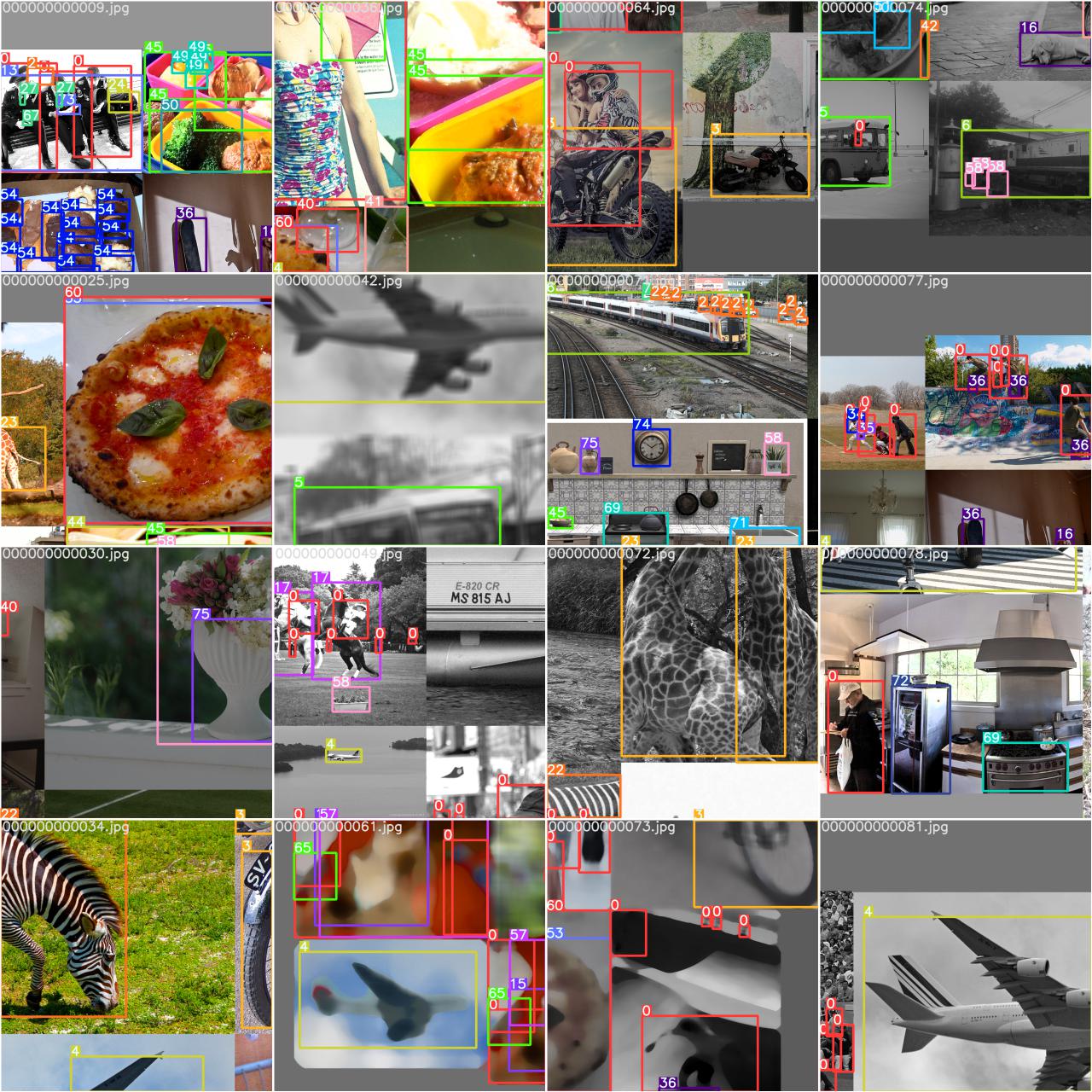-
-
Notifications
You must be signed in to change notification settings - Fork 16.5k
New issue
Have a question about this project? Sign up for a free GitHub account to open an issue and contact its maintainers and the community.
By clicking “Sign up for GitHub”, you agree to our terms of service and privacy statement. We’ll occasionally send you account related emails.
Already on GitHub? Sign in to your account
How much images will generate after data albumentation augmentation #9673
Comments
|
@yjackboo 👋 Hello! Thanks for asking about image augmentation. YOLOv5 🚀 applies online imagespace and colorspace augmentations in the trainloader (but not the val_loader) to present a new and unique augmented Mosaic (original image + 3 random images) each time an image is loaded for training. Images are never presented twice in the same way. Augmentation HyperparametersThe hyperparameters used to define these augmentations are in your hyperparameter file (default yolov5/data/hyps/hyp.scratch-low.yaml Lines 6 to 34 in b94b59e
Augmentation PreviewsYou can view the effect of your augmentation policy in your train_batch*.jpg images once training starts. These images will be in your train logging directory, typically
YOLOv5 Albumentations IntegrationYOLOv5 🚀 is now fully integrated with Albumentations, a popular open-source image augmentation package. Now you can train the world's best Vision AI models even better with custom Albumentations 😃! PR #3882 implements this integration, which will automatically apply Albumentations transforms during YOLOv5 training if Example Good luck 🍀 and let us know if you have any other questions! |
|
👋 Hello, this issue has been automatically marked as stale because it has not had recent activity. Please note it will be closed if no further activity occurs. Access additional YOLOv5 🚀 resources:
Access additional Ultralytics ⚡ resources:
Feel free to inform us of any other issues you discover or feature requests that come to mind in the future. Pull Requests (PRs) are also always welcomed! Thank you for your contributions to YOLOv5 🚀 and Vision AI ⭐! |
Hi @glenn-jocher ! Do you mean by (original image + 3 augmented images) that my new augmented dataset is (3*N+N) where N is my initial amount of data ? and the model train on these new augmented data? Is there a way to modify the number of augmented images? (changing the 3 to 5 for example to have more data? ) |
|
👋 Hi @Sarouch! That's a great question. When I mentioned "original image + 3 random images," I was referring to the Mosaic augmentation, which combines 4 images into one. This means that no additional copies of the original images are created, but rather novel combinations of images for training. If you want to increase the number of augmented images, you can certainly modify the augmentation hyperparameters in your Remember that increasing the number of augmented images doesn't always improve model performance, as there is a tradeoff between diversity and information. Additionally, the risk of overfitting may also be heightened. Good luck 🍀, and feel free to reach out if you have any more questions! |




Search before asking
Question
Hi,
I know we can use albumentation augmentation with yolov5. I want to know how many images will generate during training yolov5 model, when we use albumentation with it.
Thank you
Additional
No response
The text was updated successfully, but these errors were encountered: